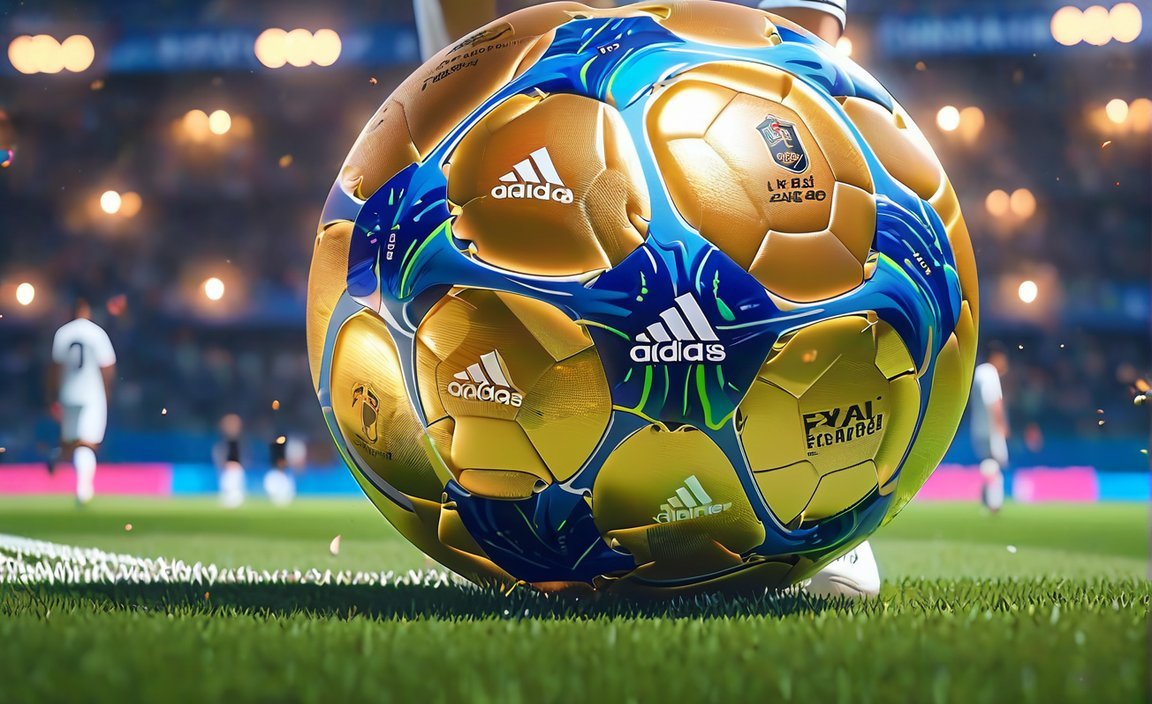If you’ve ever watched a professional soccer match, you know that passing the ball with precision and accuracy is essential for success on the field. Whether you’re a seasoned player looking to fine-tune your skills or a beginner eager to learn the art of ball passing, this article is your ultimate guide. With a wealth of experience and a deep understanding of the game’s intricacies, our expert author will walk you through the fundamental techniques and insider tips that will take your passing abilities to the next level. From mastering the perfect weight and angle of your passes to anticipating the movement of your teammates, get ready to elevate your game and become a true maestro of soccer ball passing.
Key Takeaways:
- Passing is an essential skill in soccer and should be practiced regularly.
- There are various techniques for passing, including the inside-foot pass, outside-foot pass, chipped/lob pass, long pass, and driven pass.
- The inside-foot pass is the easiest and most commonly used technique.
- The outside-foot pass is more challenging and requires experience.
- The chipped/lob pass is used when there is no space for a ground pass.
- The long pass is a lobbed pass used to switch play.
- The driven pass is a powerful, accurate pass driven into the ground.
- Good vision is crucial for successful passing.
- Retaining possession is important, so players should choose simple passes when necessary.
- Passing frequently helps maintain control and create scoring opportunities.
- The proper technique involves striking the ball with the inside surface of the foot, just below the laces.
- Planting the non-kicking foot and approaching the ball correctly are essential for a successful pass.
- Aim to hit the middle of the ball with the middle part of the inside foot for accuracy and control.
- Keep knees slightly bent and focus on hitting the ball towards the target.
- Tutorial videos and articles can provide step-by-step instructions and tips for learning how to pass a soccer ball.
How to pass a ball in soccer

Passing is a fundamental skill in soccer that requires precision and accuracy. Being able to pass the ball effectively can make a huge difference in the outcome of a game. In this guide, we will explore the different techniques for passing a soccer ball and provide step-by-step instructions to help you improve your passing skills.
The Different Techniques for Passing
Inside-Foot Pass
The inside-foot pass is the most common and easiest technique to execute. It involves striking the ball with the inside surface of the foot, just below the laces. To perform an inside-foot pass:
1. Plant your non-kicking foot next to the ball.
2. Approach the ball at a slight angle.
3. Keep your knee slightly bent and focus on hitting the middle of the ball with the middle part of your inside foot.
Outside-Foot Pass
The outside-foot pass is more challenging and requires experience. It involves striking the ball with the outside surface of the foot. To perform an outside-foot pass:
1. Plant your non-kicking foot next to the ball.
2. Approach the ball at a slight angle.
3. Focus on hitting the ball with the outside surface of your foot, using the inside of your foot for control.
Chipped/Lob Pass
The chipped/lob pass is used when there is no space to make a ground pass. It involves lifting the ball over an opponent. To perform a chipped/lob pass:
1. Plant your non-kicking foot next to the ball.
2. Approach the ball at a slight angle.
3. Use the inside of your foot to strike the bottom of the ball and lift it into the air.
Long Pass
The long pass is a lobbed pass over a long distance. It is used to switch play from one side of the field to another. To perform a long pass:
1. Step back slightly from the ball.
2. Approach the ball at a slight angle.
3. Strike the center of the ball with the middle part of your inside foot, keeping your knee slightly bent.
Driven Pass
The driven pass, also known as a grass cutter, is an advanced version of the long ball. It is driven into the ground for accuracy and speed. To perform a driven pass:
1. Step back slightly from the ball.
2. Approach the ball at a slight angle.
3. Strike the center of the ball with the middle part of your inside foot, ensuring it stays low and travels quickly along the ground.
Tips for Successful Passing
- Vision plays a crucial role in successful passing. Keep your head up to see potential passes and find open teammates.
- Practice different types of passes to master every option available.
- Choose the simple pass when necessary to retain possession and maintain control.
- Passing the ball frequently is key to creating scoring opportunities and keeping the game flowing.
- Remember to keep your knees slightly bent and focus on hitting the ball accurately to your target.
Resources for Learning
To further enhance your passing skills, there are resources available such as tutorial videos and articles that provide step-by-step instructions and tips. Here are a couple of recommended sources:
– Athletic Lift: “How to Pass a Soccer Ball [Simple Guide]”
– Complete Soccer Guide: “How to Pass a Soccer Ball – A Soccer Player’s Complete Guide”
By practicing the different techniques and incorporating the tips mentioned above, you can become a proficient passer in soccer. Remember, passing is not just about technique but also about decision-making and awareness on the field. So get out there, practice, and elevate your passing game to new heights!
In the world of basketball, Michael Jordan is often referred to by his nickname. Learn more about the famous basketball player’s nickname by clicking here.
Are you wondering how many Canadian hockey teams there are? Discover the answer and satisfy your curiosity by clicking here.
When it comes to baseball, one of the most crucial aspects is facing the pitcher. Explore the importance of facing the pitcher in baseball by clicking here.
The catcher’s position in baseball is pivotal in the game. Find out more about the duties and responsibilities of catchers by clicking here.
Tips for Improving Accuracy and Power in Soccer Passes
Passing the ball with accuracy and power is crucial in soccer. It requires mastering various techniques and maintaining spatial awareness on the field. By incorporating the following tips, you can enhance your passing skills and become a more effective player.
Aim for Accuracy and Timing with Short Passes
When attempting short passes, focus on using the inside of your foot to control the ball and aim for your target. This technique allows for greater accuracy. Plant your non-kicking foot beside the ball and slightly forward to maintain proper body positioning. By practicing this technique, you’ll improve your accuracy and timing in short passes.
Utilize the Inside of Your Foot for Control
Passing with the inside of your foot provides better control and accuracy. Set your non-kicking foot beside the ball and slightly forward to establish the right body posture. By utilizing the inside of your foot, you’ll be able to make accurate passes and maintain control over the ball.
Master Long Passes with the Instep
When attempting long passes, strike the ball with the instep of your foot. This technique allows for more power and accuracy when delivering the ball over longer distances. By mastering the use of your foot’s instep, you’ll be able to execute accurate and powerful long passes.
Incorporate Through Balls and Lofted Passes for Variation
To keep your passes unpredictable and catch opponents off guard, incorporate through balls and lofted passes into your game. Through balls involve passing the ball into space for teammates to run onto, while lofted passes emphasize airtime and height. By incorporating these variations, you’ll create scoring opportunities and maintain the element of surprise in your passes.
Maintain Keen Spatial Awareness
To make accurate passes, it’s vital to anticipate your teammates’ movements and your opponents’ defensive strategies. By maintaining spatial awareness on the field, you’ll be able to make timely and precise passes. Keep track of your surroundings and assess the best passing options available to you.
Keep Your Head Down as You Pass
Maintaining accuracy requires keeping your head down and focusing on the ball as you pass. Avoid opening up your body, as this can negatively affect the trajectory and accuracy of your passes. By keeping your head down, you’ll be able to deliver accurate passes consistently.
Vary the Distance Between the Lines for Practice
When practicing passing drills, adjust the distance between the lines based on the age and skill level of the players. This ensures appropriate challenge and development for all participants. By varying the distance between the lines, you’ll be able to tailor the drills to specific skill levels and promote consistent improvement in passing accuracy.
Key Takeaways:
- Focus on accuracy and timing with short passes by using the inside of your foot.
- Utilize the inside of your foot for better control and accuracy in passing.
- Master long passes by striking the ball with the instep of your foot.
- Incorporate through balls and lofted passes to keep your passes unpredictable and create scoring opportunities.
- Maintain keen spatial awareness to make accurate and timely passes.
- Keep your head down and avoid opening up your body to maintain passing accuracy.
- Vary the distance between the lines in passing drills to cater to different skill levels.
Sources:
– “Best Ways To Pass In Soccer” (soccerfeed.net)
– “How to Improve Football Passing” (mv8academy.com)
Understanding the Importance of Timing and Communication
Effective passing in soccer requires more than just technical skill and accuracy. Timing and communication play crucial roles in ensuring successful passes and maintaining team coordination on the field. In this article, we will explore the significance of timing and communication in soccer passing and provide actionable tips to improve these aspects of your game.
Timing: The Key to Successful Passing
Timing is everything when it comes to passing the ball in soccer. It determines the effectiveness of your pass, as well as how well your teammate can receive and control the ball. Here are some key points to remember about timing in passing:
- Anticipation: To pass the ball accurately, you need to anticipate the movement of your teammates. By understanding their playing style and positioning on the field, you can time your passes to reach them at the right moment. Anticipating their runs or positioning can open up passing opportunities and create scoring chances.
- Decision-Making: Timing is closely tied to decision-making in passing. Choosing the right time to release the ball can make a significant difference in the success of your pass. Assess the situation quickly and make smart decisions based on the movement of your teammates and the opponents’ positioning.
- Passing Distance: Timing also comes into play when adjusting the distance of your pass. For short passes, a quick release can catch your teammate by surprise, allowing them to receive the ball without interruption. Longer passes may require more timing, as you need to account for the distance the ball needs to travel and the movement of your teammate.
- Reload Passes: In certain situations, reloading passes can be a useful technique for maintaining possession and creating passing angles. A well-timed reload pass involves passing the ball back to a teammate who is in a better position to continue the attack or find an open teammate.
Remember, timing is a skill that can be developed through practice and experience. Pay attention to the movement of your teammates, gauge the pace of the game, and make split-second decisions to execute well-timed passes.
Communication: The Glue that Holds Passing Together
Communication is an integral part of successful passing in soccer. It allows you to convey information, give instructions, and ensure that your teammates are on the same page. Here’s why communication is vital in soccer passing:
- Direction: Clear communication helps you direct your passes accurately. By calling out the name of the intended recipient or using simple directions, such as “left” or “right,” you can guide your passes and make them easier for your teammates to receive.
- Awareness: Communication promotes greater awareness among players on the field. By relaying information about the positioning of opponents or open spaces, you can help your teammates make better decisions and execute more effective passes.
- Coordination: Effective communication fosters better coordination among teammates. By providing verbal cues or signals, you can synchronize movements, anticipate each other’s actions, and create passing opportunities that exploit the opposition’s weaknesses.
- Support: Communication builds a supportive and cohesive team environment. By offering encouragement, instructions, and feedback, you can boost confidence, maintain morale, and facilitate effective passing both in training sessions and during games.
Remember to communicate assertively and concisely. Be vocal on the field, use clear and concise language, and encourage your teammates to communicate as well. Good communication breeds trust, understanding, and efficient passing.
Key Takeaways:
- Timing plays a crucial role in successful passing, including anticipating your teammates’ movements and making smart decisions about when to release the ball.
- Develop your decision-making skills and adjust your passing distance based on the situation and positioning of your teammates.
- Reload passes can help maintain possession and create passing angles, particularly when your teammates are closely marked.
- Effective communication is essential for guiding your passes accurately, promoting awareness, coordinating movements, and creating a supportive team environment.
- Use clear and concise language to direct your passes, provide valuable information, and foster understanding among teammates.
Sources:
1. How to Pass a Soccer Ball
2. The Crucial Role Of Passing :: Football Technical Training
Drills and exercises to enhance passing skills
Passing is a crucial skill in soccer that can make the difference between a successful team and a struggling one. To help improve your passing abilities, here are some effective drills and exercises you can incorporate into your training:
1. Pass and Move
Pass and Move is a drill that focuses on the importance of movement after making a pass. By continuously finding open space and creating opportunities for yourself and your teammates, you can become a more dynamic player. Here’s how to perform this drill:
- Pass the ball to a teammate and immediately move to a different position on the field.
- Receive the ball from another teammate and repeat the process.
(Source: weareteachers.com)
2. Triangle Passing
Triangle Passing is a drill that enhances accuracy and precision in passing. It involves setting up a triangle-shaped playing area and passing the ball through the triangle. Here’s how to conduct this drill:
- Set up four cones, about 10 yards apart, to create a square-shaped playing grid.
- Place a single cone in the center of the square to form the triangle.
- Divide players into two teams and assign different color cones to each team.
- Teams should complete at least two passes before attempting to pass the ball through the triangle.
(Source: soccerxpert.com)
3. Possession
Possession is a drill that helps players develop their passing skills while maintaining control of the ball. By practicing in a designated area of the field, you can improve your ability to keep possession and make accurate passes under pressure. Here’s how to perform this drill:
- Designate a specific area on the field using cones or pre-existing lines.
- Divide players into two teams and assign different color bibs or shirts.
- The teams compete to keep possession and score by passing the ball through any side of the designated area.
- Players must complete at least two passes before attempting to pass the ball through the area.
4. Two-Ball Passing
Two-Ball Passing is a challenging drill that helps improve coordination, focus, and quick thinking. By passing and receiving two balls simultaneously, you can enhance your ability to process information and make split-second decisions on the field. Here’s how to conduct this drill:
- Pair up players and position them facing each other.
- Each player should have a ball.
- Players pass their ball to their partner while simultaneously receiving their partner’s pass.
- Encourage players to maintain a high tempo and rhythm throughout the drill.
Key Coaching Points for Passing Skills:
– Practice passing with both feet to maximize your skills.
– Maintain a balanced body position with your body over the ball.
– Use the appropriate surface of your foot (inside, outside, or top) for different types of passes.
– Pay attention to the weight and timing of your passes for successful distribution.
– Keep your eyes on the target when making a pass.
– Stay focused and avoid opening up your body too much while passing.
– Communication is crucial for successful passing, so be vocal and clear on the field.
By incorporating these passing drills and focusing on key coaching points, you can enhance your passing skills and become a more effective player in team play.
Key Takeaways:
– Pass and Move drill emphasizes the importance of movement after passing.
– Triangle Passing drill enhances accuracy and precision in passing.
– Possession drill helps develop passing skills while maintaining control of the ball.
– Two-Ball Passing drill improves coordination, focus, and quick thinking.
– Practice passing with both feet and use the appropriate surface of your foot for different types of passes.
– Pay attention to the weight, timing, and accuracy of your passes.
– Maintain a balanced body position and keep your eyes on the target when passing.
– Communication is crucial for successful passing.
– By incorporating these drills and techniques, you can enhance your passing skills and contribute to your team’s success.
Sources:
– WeAreTeachers: Soccer Drills
– SoccerXpert: Soccer Passing Drills

FAQ
Q1: What are the different techniques for passing a soccer ball?
A1: The different techniques for passing a soccer ball include the inside-foot pass, outside-foot pass, chipped/lob pass, long pass, and driven pass.
Q2: Which pass is the most common and easiest to execute?
A2: The inside-foot pass is the most common and easiest technique to execute.
Q3: What is the hardest pass to execute and requires experience?
A3: The outside-foot pass is the hardest pass to execute and requires experience.
Q4: When should I use a chipped/lob pass?
A4: The chipped/lob pass is used to lift the ball over an opponent when there is no space to make a ground pass.
Q5: What is a long pass used for?
A5: The long pass is a lobbed pass over a long distance and is used to switch play from one side of the field to another.
Q6: What is a driven pass?
A6: The driven pass, also known as a grass cutter, is an advanced version of the long ball and is driven into the ground for accuracy and speed.
Q7: How important is vision for successful passing?
A7: Vision is important for successful passing, as it allows players to see potential passes and find open teammates.
Q8: Should I practice different types of passes?
A8: Yes, players should practice different types of passes to master every option available.
Q9: Is it important to choose the simple pass when necessary?
A9: Yes, retaining possession is crucial, so players should choose the simple pass when necessary.
Q10: How often should I pass the ball during a game?
A10: Passing the ball often is key to maintaining control and creating scoring opportunities.
- Senior at What Age: Benefits & Eligibility Guide - March 29, 2025
- Unlocking Senior Benefits: How Old is a Senior? Your Complete Guide - March 29, 2025
- Master Russian Politeness:A Guide to Saying Please - March 29, 2025
















